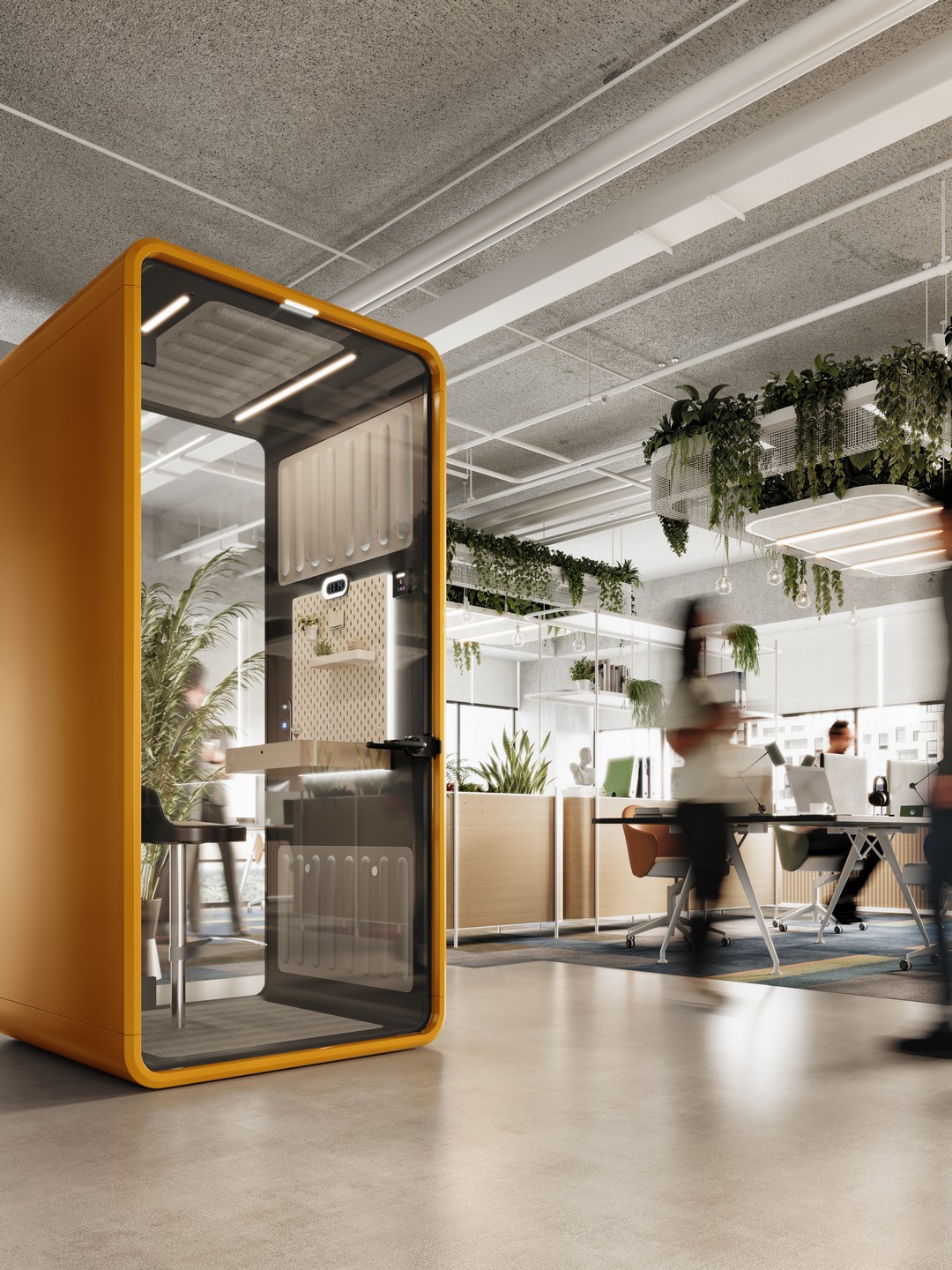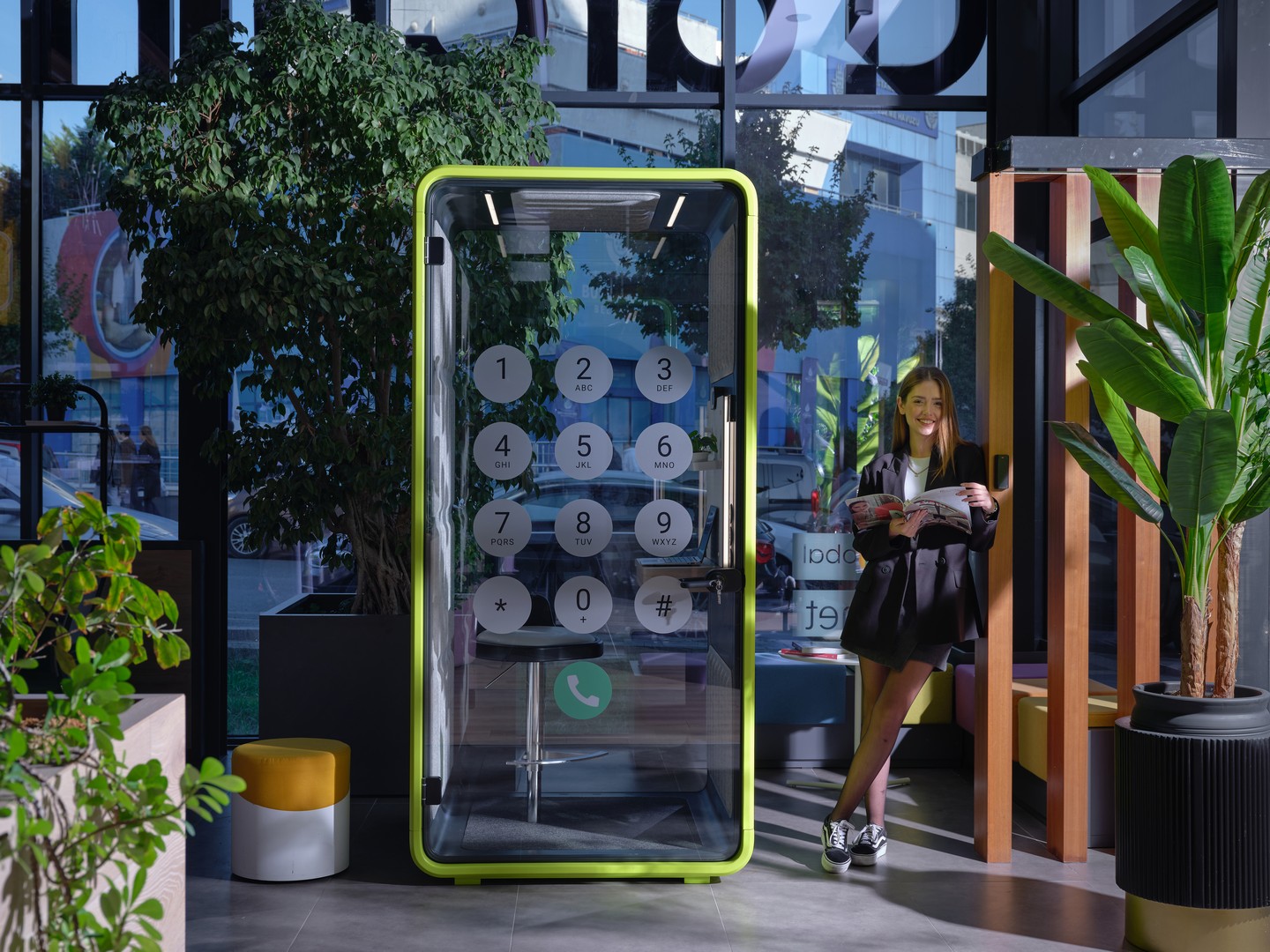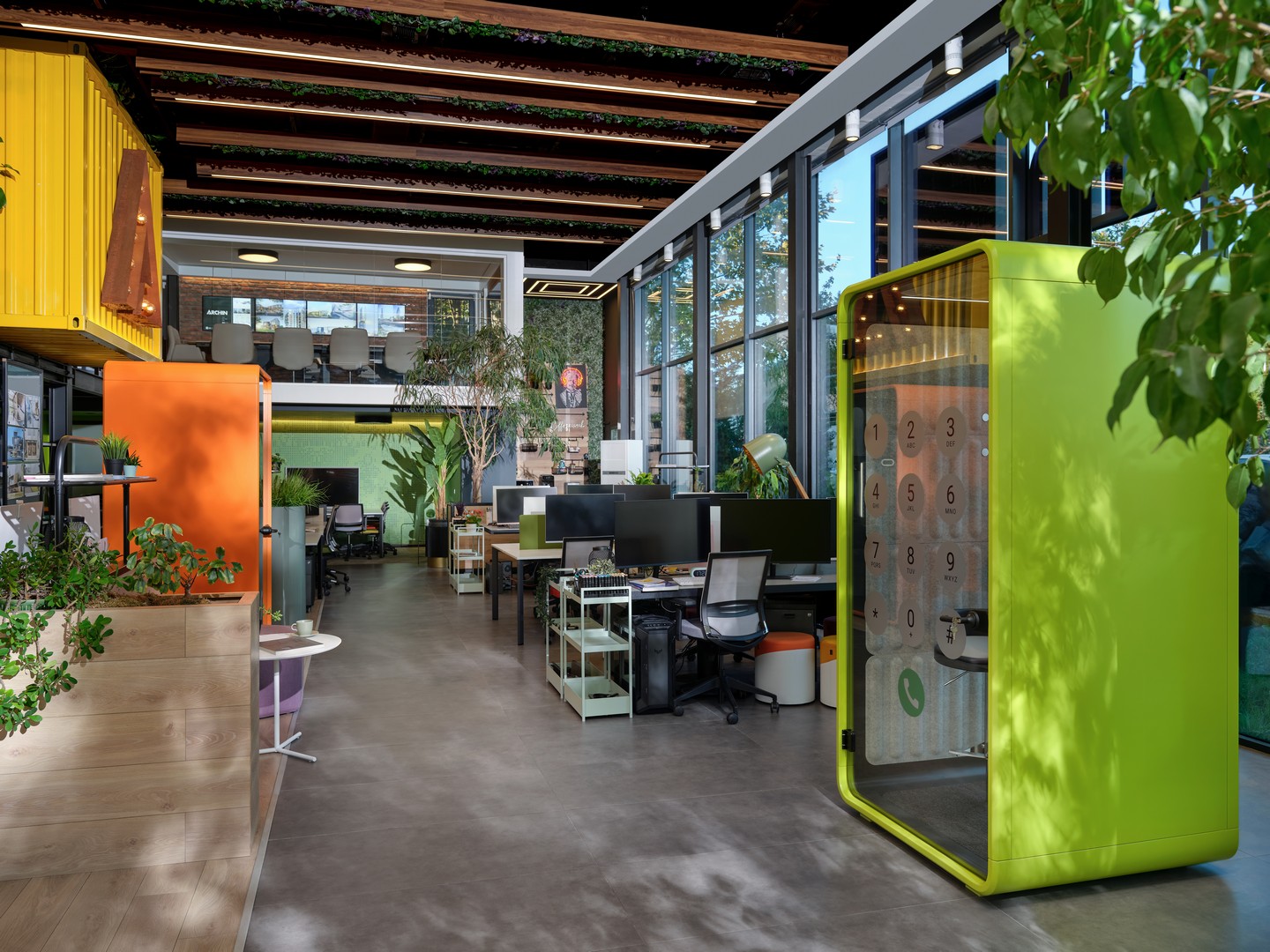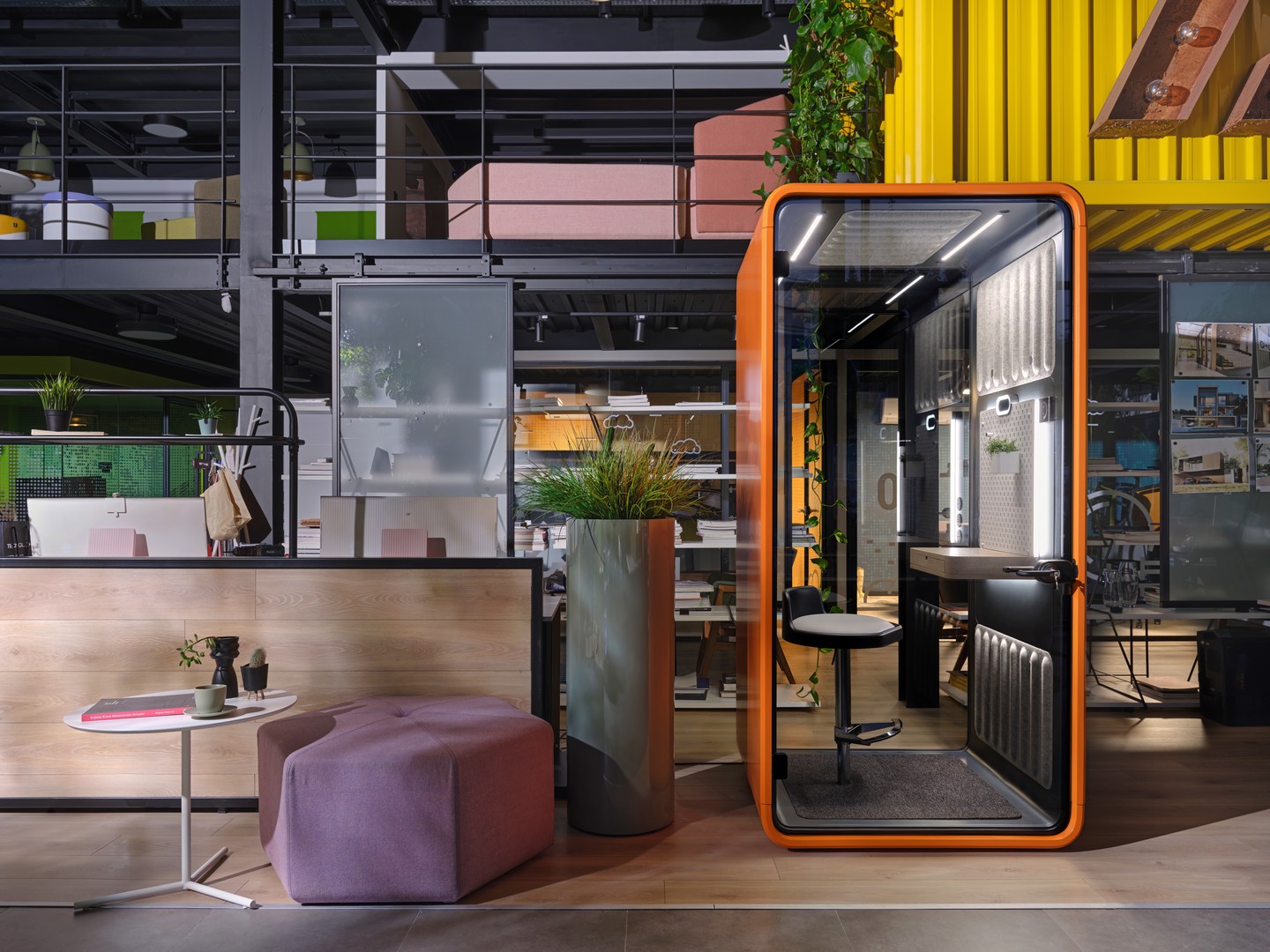Changing work habits and employee expectations are radically transforming office architecture. In 2025, office design is shaped not only by aesthetics but also by principles of productivity, flexibility, and human-centeredness.
1. Flexible and Modular Spaces
One of the most important office architecture trends of 2025 is modularity. Offices are now designed with movable panels, partition systems, and multifunctional furniture that can be easily rearranged instead of fixed walls and barriers.
This approach allows rapid adaptation to different scenarios created by hybrid working.
2. Open Spaces + Quiet Focus Zones
The open office concept remains popular but is now balanced with quiet, individual focus areas.
Therefore, employees integrate silent booths, small private rooms, or acoustic solutions within open offices.
In this transformation, (for example: Phox) becomes an integral part of the architecture.
3. Biophilic Design (Nature-Integrated Offices)
Biophilic design integrates nature into the office, providing both visual aesthetics and psychological balance.
Common applications in 2025 offices include:
- Indoor plants and green walls
- Openings that maximize natural daylight
- Use of natural materials (wood, stone, raw textures)
4. Acoustic Comfort
Noise pollution is one of the biggest obstacles to productivity. Therefore, in 2025, acoustic design becomes a priority.
- Sound-insulated wall panels
- Acoustic materials in ceilings and floors
- Acoustic furniture and speech booths
In this context, acoustic pods are planned as a key part of architectural solutions.
5. Technology Integration
Offices are no longer only about aesthetics—they must also be smart. In 2025, architectural designs integrate with technologies such as:
- Smart lighting and heating systems
- Motion-activated lights
- Facial recognition or card access systems
- Wireless charging stations
Architectural planning now encompasses not just physical but also digital infrastructure.
6. Home-Like Offices
After the pandemic, employees began seeking home-like comfort in the office. Therefore, in 2025 offices:
- Soft seating areas
- Relaxation corners
- Coffee points and social spaces
- Carpets, curtains, and fabric details
Elements that evoke a home-like feeling are incorporated into the design.
7. Sustainability-Focused Designs
Green building certifications are now almost standard. In 2025, office architecture prioritizes:
- Energy-efficient materials
- Recyclable building elements
- Solar panels and rainwater harvesting systems
- LEED or BREEAM certifications
8. Designs Aligned with Brand Identity
Offices are no longer just workspaces—they also serve as a showcase of the brand’s character. Therefore, in 2025 offices:
- Corporate colors
- Decor aligned with the logo
- Graphic applications that tell the brand story
- Experiential space design
will be emphasized.
Summary: 2025 Office Architecture, Human and Experience-Centered
Offices are now designed not just for “working,” but for feeling better, being more creative, and collaborating effectively. The architectural trends of 2025 focus on next-generation spaces that support both employee well-being and corporate vision.
If you are planning an office transformation aligned with these trends, consider investing in acoustic solutions, modular furniture, and quiet zones.



